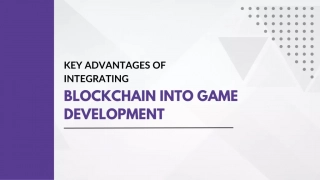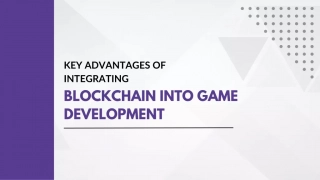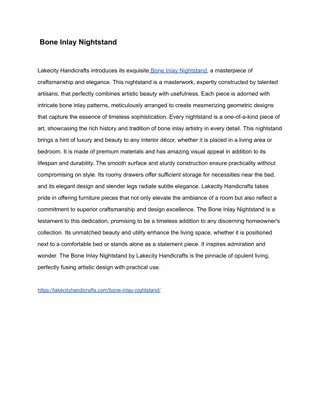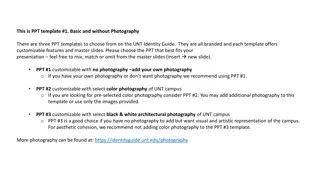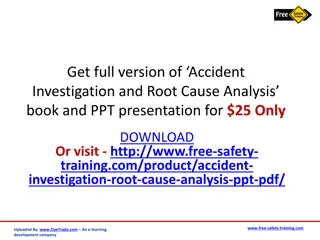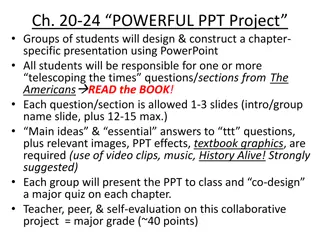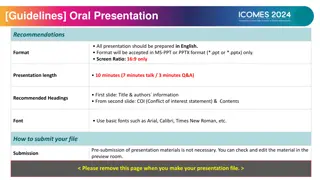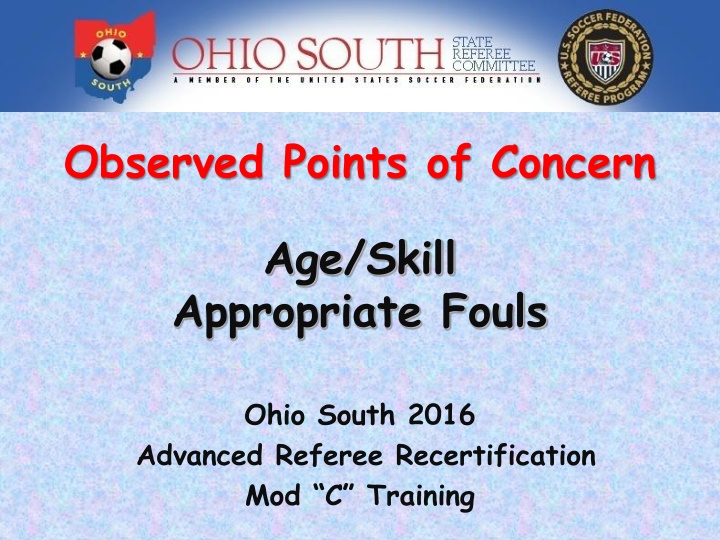
Crucial Insights for Age and Skill Appropriate Referee Calls
Gain valuable insights into managing fouls based on age and skill levels in soccer refereeing. Learn how to prioritize safety, differentiate fouls, and apply the right approach for player expectations.
Uploaded on | 1 Views
Download Presentation

Please find below an Image/Link to download the presentation.
The content on the website is provided AS IS for your information and personal use only. It may not be sold, licensed, or shared on other websites without obtaining consent from the author. If you encounter any issues during the download, it is possible that the publisher has removed the file from their server.
You are allowed to download the files provided on this website for personal or commercial use, subject to the condition that they are used lawfully. All files are the property of their respective owners.
The content on the website is provided AS IS for your information and personal use only. It may not be sold, licensed, or shared on other websites without obtaining consent from the author.
E N D
Presentation Transcript
Observed Points of Concern Age/Skill Appropriate Fouls Ohio South 2016 Advanced Referee Recertification Mod C Training
Age/Skill Level Items of Concern SAFETY must be a priority at all levels of play Game should be managed more with respect to the individual Skill Level of Play, i.e. not necessarily to the Age Level of the teams Must differentiate when a player or a team needs to have a foul called or not
Age Level Differences 1) Nature of Fouls 2) Speed of the Game 3) Misconduct - Type and Timing 4) How to Talk to Players
Nature of Fouls Younger Ages Fouls are more likely to be careless Older Youth Fouls are more calculated Trifling fouls due to lack of coordination Oftentimes used to send a message Must be dealt with properly to send a message to the player and for the game Incidental Contact Balancing Careless vs. Reckless Tendency to be more tactical
Age/Skill Appropriate Fouls Foul calls must be recognized and adjusted to: Insure the SAFETY of all participants above all other criteria Fit the acceptable age level of the match (U16, U11, etc.) Suit the level of ability of the individual player being fouled (skilled, average, unskilled, etc.) Fit the level of an individual play situation (deliberate, reckless, excessive, etc.) Differentiate between klutziness and purposeful Fit the gender differences and tendencies Fit the nature of a play (tactical or not, DOGSO or not, etc.) Fit the temperature of the game situation (intense & competitive or relaxed & uneventful, etc.)
Right vs Best Concept Referees must apply their discretionary powers and employ the concept of BEST (Law 18 Common Sense) vs. RIGHT (Letter of the Law) as it pertains to the skill level and player expectations. The two extreme ends of the spectrum: The oldest and more-skilled male players are more likely to want the referee to implement the what is BEST approach and allow the game to flow with as little foul stoppages as possible. The youngest less-skilled female players are wanting the referee to implement the what is RIGHT approach and call every foul.
Age/Skill Appropriate Fouls Referees must be mindful that not all foul incidences are the same . Striking in a U12 game is not the same as Striking in a U18 game Pushing in a U14 girls match is not the same as Pushing in a U14 boys match. Holding player #14 is not the same as Holding player #22 on the same team in the same game Misconduct in a U16 match is not handled the same as Misconduct in a U13 match What may be considered as a light foul (trifling) in one game may not be in another game . and even in the same game a trifling foul committed against one player may not be trifling when committed against another player.
Age/Skill Appropriate Fouls WATCH-OUTS Youth-age referees must be aware not to officiate younger matches at the same level or with the same expectations as they may play their own games. Adult referees must also be aware not to officiate all games as if they were a U18 competitive boys match, or conversely, also not as if they were all a U11 match. Referees . You MUST continually adapt and adjust your game to be in concert with the match and the play-by-play situations as the events develop.
Speed of the Game Older Ages More skilled players, bigger, faster Younger Ages Skilled players mixed with unskilled players Quicker, requires faster reaction time High intensity, more helter- skelter Pace may be slower due to tactical approach Fast paced due to less tactical approach Defensive play Man-to-Man marking Zonal marking Aerial play Slower due to player size and strength Attacking play Direct play Wide play Pace play
Misconduct Type and Timing Oldest Ages Vs. Players Calculated Retaliatory Younger Ages Vs. Players Reactive, Immediate Vs. Referees Indirect, Verbal Seeking Justice Vs. Referees Direct, In-Your-Face Intimidating Testing Reactions
How to Talk to Players Older Youth Treat with respect Younger Ages Treat with respect They want to be treated more like adults; not children You are the authority figure Avoid intimidating Do not get into arguments; remain calm
RECOGNIZING A FOUL Is it really a foul? If it is a foul, does it need to be called?
Skill Level Brain Teaser #9 In a BU19 State Cup match a hard kicked ball is coming right toward player A6's head. Reflectively, the player A6 raises both hands to protect his face and the ball then hits A6's forearm and falls to the ground at his feet. A6 immediately collects the ball with his feet and dribbles the ball around a defender D2 and kicks the ball into the goal. The referee should (more than one correct answer may be possible): A. Allow the goal, since no foul has occurred B. Do not allow the goal and call the foul on A6 for deliberately handling the ball C. Do not allow the goal and call a foul on A6 because he gained an unfair advantage from the ball to hand contact. D. Restart with a kick-off E. Restart with a DFK for D2 s team F. Restart with an IFK for D2 s team
Skill Level Brain Teaser #10 In a GU10 Division C match a hard kicked ball is coming right toward an attacking player A9's head. Reflectively, the player A9 raises both hands to protect her face and the ball then hits her forearm and falls to the ground at her feet. A9 immediately collects the ball with her feet and kicks it into the goal. The referee should (more than one correct answer may be possible): A. Allow the goal, since no foul has occurred B. Do not allow the goal and call the foul on A9 for deliberately handling the ball C. Do not allow the goal and call a foul on A9 because she gained an unfair advantage from the ball to hand contact. D. Restart with a kick-off E. Restart with a DFK for the defending team F. Restart with an IFK for the defending team
Qualities of Top Level Referees Experience Learning from Experience Positioning Fitness Confidence Courage Player-Management ALL Referees should be striving to maximize these Qualities Concentration Dealing with Confrontations Applying the Laws of the Game Remaining Calm Under Pressure Personality



